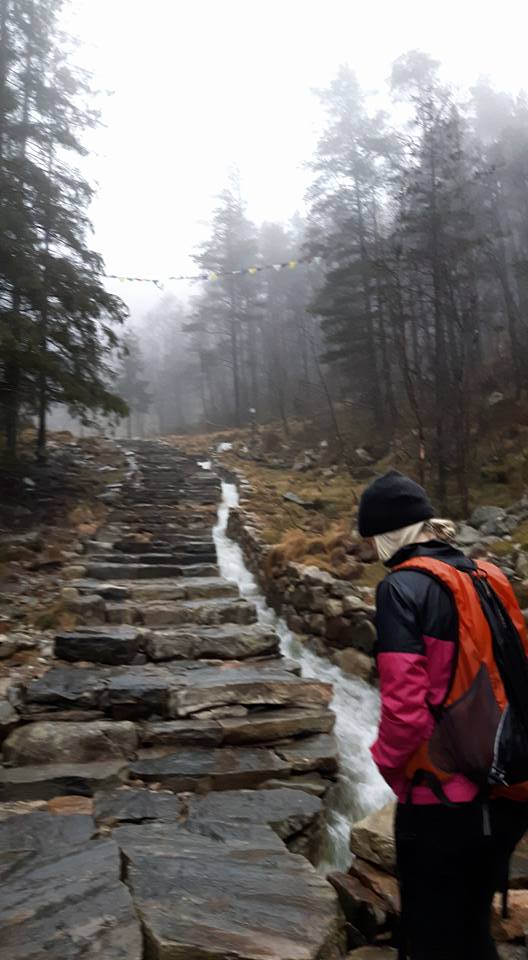
Norway has many beautiful mountain peaks. Local hikers take advantage of the opportunities to get to the tops, as well as tourists from all over the world. But how does this traffic affect the nature?
Norwegian management of the outdoors differs from many countries. We aim to maintain the wilderness. We try to keep human impact to a minimum. Instead we focus on educating the people about how to adjust to wilderness, and not the other way around. But wear and tear is a challenge, especially on the most famous landmarks. In fact, the footpaths became so bad that something needed to be done. The solution was the Sherpa.

Sherpa are a people who lives in the mountain areas in the eastern parts of Himalaya, Nepal, India and Tibet. They are known for their strength and good capacity to work in high altitudes. They are experts in performing labour on difficult stretches where machines don’t access. They use their strong backs and hands to collect stones from the surrounding area.
You might be wondering why the Norwegians don’t wear out their own backs when the mountains are getting a makeover?
If this was a few hundred years back in time, then the Norwegians would have knowingly embarked on this task with excitement and joy. We used to be accustomed to struggling for existence in barren mountain areas, with little arable land. You can still find stone farms to witness the impressive building style. But this skill and the craft has been lost to modernisation.
So far the Sherpa have restored the footpaths to the following destinations in Norway:
- Keiserstien in Bodø
- Skåla in Nordfjord
- Besseggen in Jotunheimen
- Preikestolen in Kjerag
- Gaustadtoppen in Telemark
- Fanaråken in Jotunheimen
- Stoltzekleiven in Bergen
- Oppstemten in Bergen
- Kongevegen in Lærdal
- Breidablikk by Folgefonna
In addition to making the footpaths safe and beautiful, the restoration contributes to directing the traffic. Then the hardy flowers on the side of the path can bloom in peace, and the wear and tear does not spread out. The Sherpa contribution therefore helps us to find a better balance between enjoying nature, and at the same time taking care of her.

And the Sherpa? What does he get? 1 summer season in Norway pays more than 30 year salaries in Nepal. The cooperation has created hope for a better future, and has made huge changes in a culture that is in danger of getting lost.
The project contributes to fighting poverty and to keep the building style and crafts of the Sherpa. The Sherpa whom by the way has social economy. Meaning all the money made in Norway is distributed among those who need it in the village.

So please enjoy our footpaths restored by Sherpa, such as Mt. Ulriken and Mt. Preikestolen!
Have you been hiking on footpaths built by Sherpa?
Visit our website Fjordand.com
Written by: Marianne Thon Sørensen (marianne@bergenbasecamp.no)

Hei
Dere har ikke tatt med at de har jobbet mye og lenge på “Kongevegen” i Lærdal ved Galdane.
De har og laget sti/trapper og til Breidablikk, som vi bruker når vi er med på Folgefonna Opp.
Mvh
Elisabeth Grøtte Kolstad
Sendt fra min iPad
Den 28. mar. 2017 kl. 15.16 skrev Fjord & <comment-reply@wordpress.com>:
fjordand posted: ” Norway has many beautiful mountain peaks. Local hikers take advantage of the opportunities to get to the tops, as well as tourists from all over the world. But how does this traffic affect the nature? Norwegian management of the outdoors differs from m”
LikeLiked by 1 person
Takk for tips. Det skal vi få med i innlegget!! 😀
LikeLike